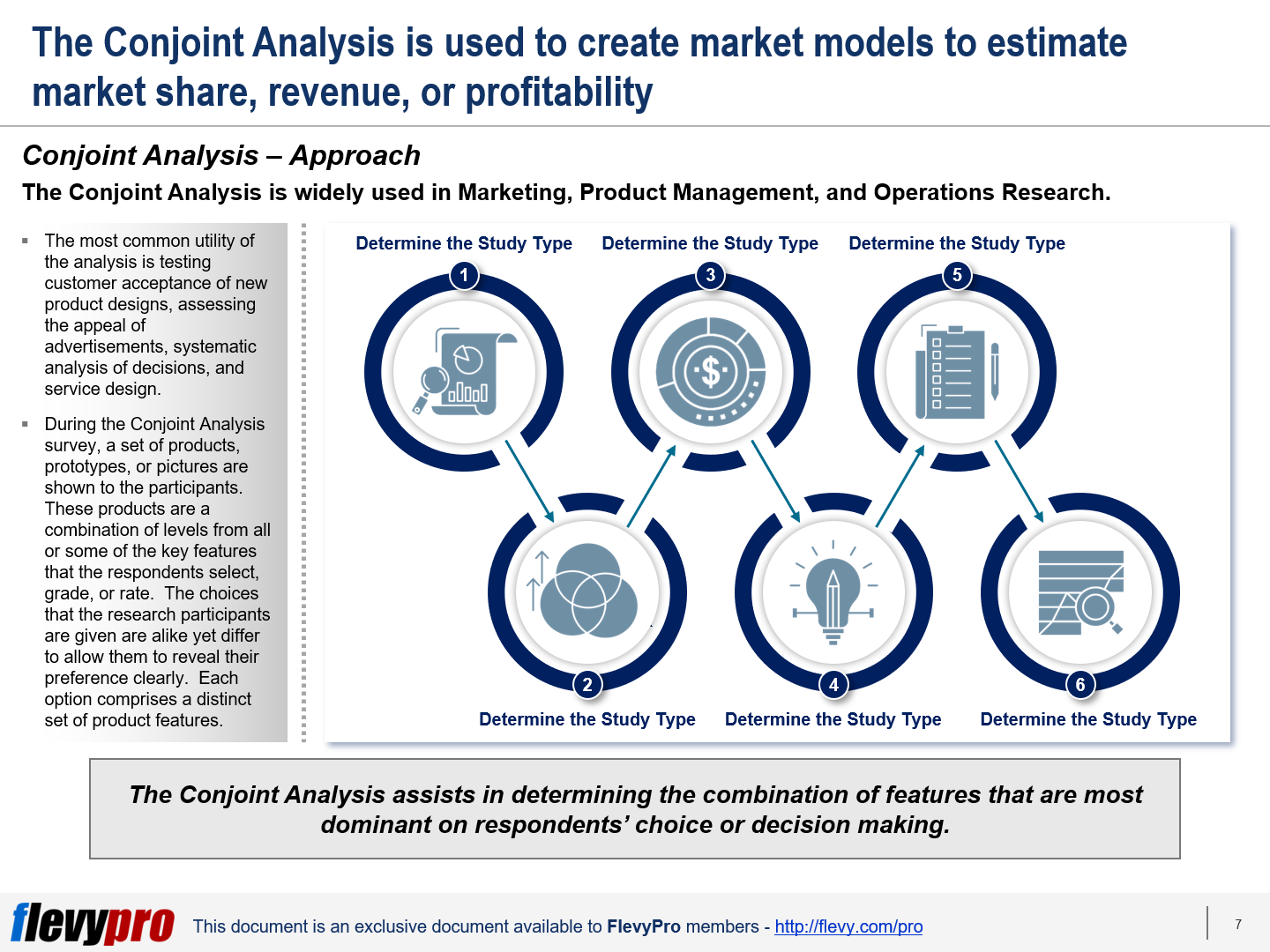Identifying what the market wants is a critical issue for most executives. Likewise, the decision on how much to charge for a product is also crucial for planners. This is where Market Research comes to rescue.
One of the Marketing Research methods that researchers most commonly employ is the Conjoint (Trade-off) Analysis. Conjoint Analysis helps in identifying product features that consumers prefer, discerning the impact of price changes on demand, and estimating the probability of product acceptance in the market.
In contrast to directly inquiring from the respondents about the most important feature in a product, Conjoint Analysis makes the survey participants assess product profiles. These product profiles comprise various linked—or conjoined—product features, therefore the analysis is termed “Conjoint Analysis.” Conjoint Analysis simulates real-world buying situations where the researchers statistically determine the product attributes—that carry the most impact and are attractive to the participants—by substituting the features and recording the participants’ responses.
The Conjoint Analysis Approach
The Conjoint Analysis is useful in creating market models to estimate market share, revenue, or profitability. The Conjoint Analysis is widely used in marketing, product management, and operations research. The Conjoint Analysis approach entails the following key steps:
- Determine the Study Type
- Identify Relevant Features
- Establish Values for Each Feature
- Design Questionnaire
- Collect Data
- Analyze Data
1. Determine the Study Type
The first step of the Conjoint Analysis involves ascertaining and selecting from a number of different types of Conjoint Analysis methods available. This should be determined based on the individual requirements of the organization.
2. Identify Relevant Features
The next step of the Conjoint Analysis entails categorizing the key features or relevant attributes of a product. For instance, setting the main product attributes in terms of size, appearance, price.
3. Establish Values for Each Feature
After selecting the key features of the product, the next step in Conjoint Analysis is to choose some values for each of the itemized features that have to be enumerated. A combination of features in different forms should be chosen to present to the participants. The presentation could be written notes describing the products or in the form of pictorial descriptions.
4. Design Questionnaire
The basic forms of Conjoint Analysis—practiced in the past—encompassed a set of product features (4 to 5) used to create profiles, displayed to the respondents on individual cards for ranking. These days, different design techniques and automated tools are used to reduce the number of profiles while maintaining enough data availability for analysis. The questionnaire length depends on the number of features to be evaluated and the Conjoint Analysis type employed.
5. Collect Data
A statistically viable sample size and accuracy should be considered while planning a Conjoint Analysis survey. It is up to the senior management to decide how they want to gather the responses—by taking the responses from each individual and analyzing them individually, collecting all the responses into a single utility function, or dividing the respondents into segments and recording their preferences.
6. Analyze Data
Various econometric and statistical methods are utilized to analyze the data gathered through the Conjoint exercise. This includes linear programming techniques for earlier Conjoint types, linear regression to rate Full-Profile Tasks, and Maximum Likelihood Estimation (MLE) for Choice-based Conjoint.
Types of Conjoint Analysis
There are a number of Conjoint Analysis types available for the marketing researchers to choose from, including:
- Two-Attribute Tradeoff Analysis
- Full-Profile Conjoint Analysis
- Adaptive Conjoint Analysis
- Choice-Based Conjoint Analysis
- Self-Explicated Conjoint Analysis
- Max-Diff Conjoint Analysis
- Hierarchical Bayes Analysis (HB)
Interested in learning more about Conjoint Analysis? You can download an editable PowerPoint on Conjoint Analysis Primer here on the Flevy documents marketplace.
Are you a Management Consultant?
You can download this and hundreds of other consulting frameworks and consulting training guides from the FlevyPro library.

Comments